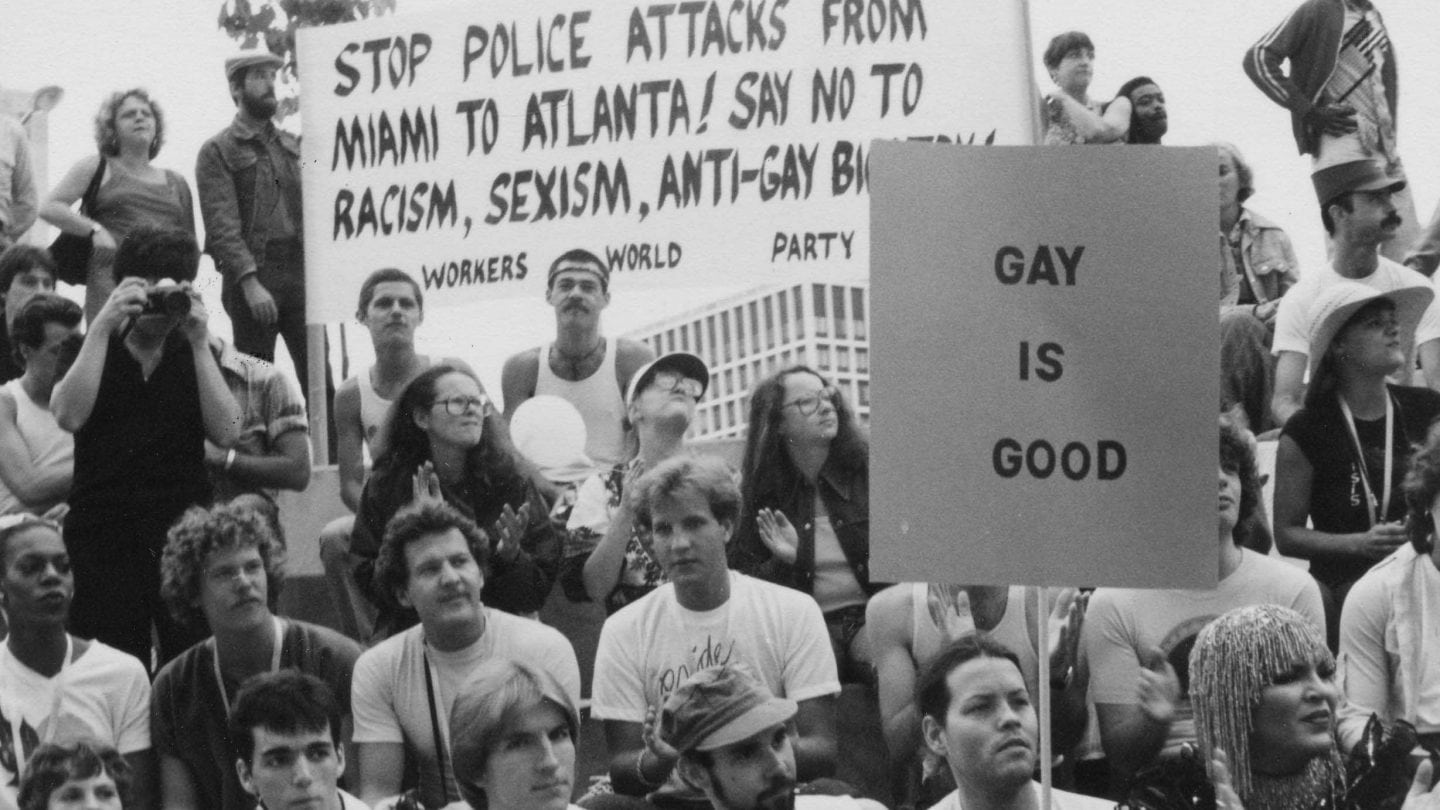
Lesbian, Gay, and Transperson Pride Rally, 1980
June 2019 marked the 50th anniversary of the Stonewall uprising, which sparked national media attention for America’s LGBTQIA+ rights movement. The uprising on June 28, 1969, proved to be the catalyst for communities across the country, inspiring protest, mobilization, and change. In Atlanta, the Lonesome Cowboys raid of August 1969 sparked outrage from the LGBTQIA+ community across the city. National tensions were high from the Vietnam anti-war movement and from the assassination of Dr. Martin Luther King Jr. as well as Atlanta’s central role in the Civil Rights Movement. Within that environment, the city’s LBGTQIA+ organizers saw an opportunity for visibility and change.
Forging a New Path: Pride in the ‘70s and ‘80s
Pride in Atlanta during the 1970s and 1980s focused on forging a path for LGBTQIA+ activists. The aims of parade and rally organizers were to seek out opportunities for policy change, form a sense of unity within the community, and build a network of outspoken supporters to serve as a hub for LGBTQIA+ rights in the South. To do this, organizers sought to create new traditions through pride parades, rallies, and publications.
Atlanta’s first pride parade took place in 1970 on the anniversary of the Stonewall uprising in New York. Spurred by the uprising’s national attention as well Atlanta’s own Lonesome Cowboys raids, 100 demonstrators—mostly white males—marched down Midtown’s sidewalks carrying “Equal Rights for Gays” posters. The march ended at Piedmont Park where a rally took place. To our knowledge, no images of or articles about the demonstration exist. This small act of protest sent ripples through the city’s gay community.
Fast forward six years to 1976 and the crowd swelled to more than 1,000 people at Atlanta Pride, but it remained predominantly white and male. Mayor Maynard Jackson declared the day of the parade, June 26, to be Gay Pride Day in Atlanta. The following year, Mayor Jackson issued a subsequent proclamation for Civil Liberties Day after facing backlash for his emphasis of Gay Pride in 1976. This galvanized the city’s LGBTQIA+ community in 1977. Attendance of that year’s parade skyrocketed. Activist Larry Laughlin wrote in The Barb, “If the [1977] March did nothing else but show other gays our potential, it was well worth the effort.”
Local activist Bill Murphy recalled his first pride experience as a Tech student in Atlanta in 1976 during an interview with the Atlanta Journal Constitution: “[Marching down Peachtree] was a dangerous thing to do. … All these things were running through my mind: What if one of my classmates sees me? What if a carload of rednecks drives into us?” Despite the fear, Murphy felt hopeful. “At the same time, it was exhilarating. It was an incredible feeling of not being alone anymore.”
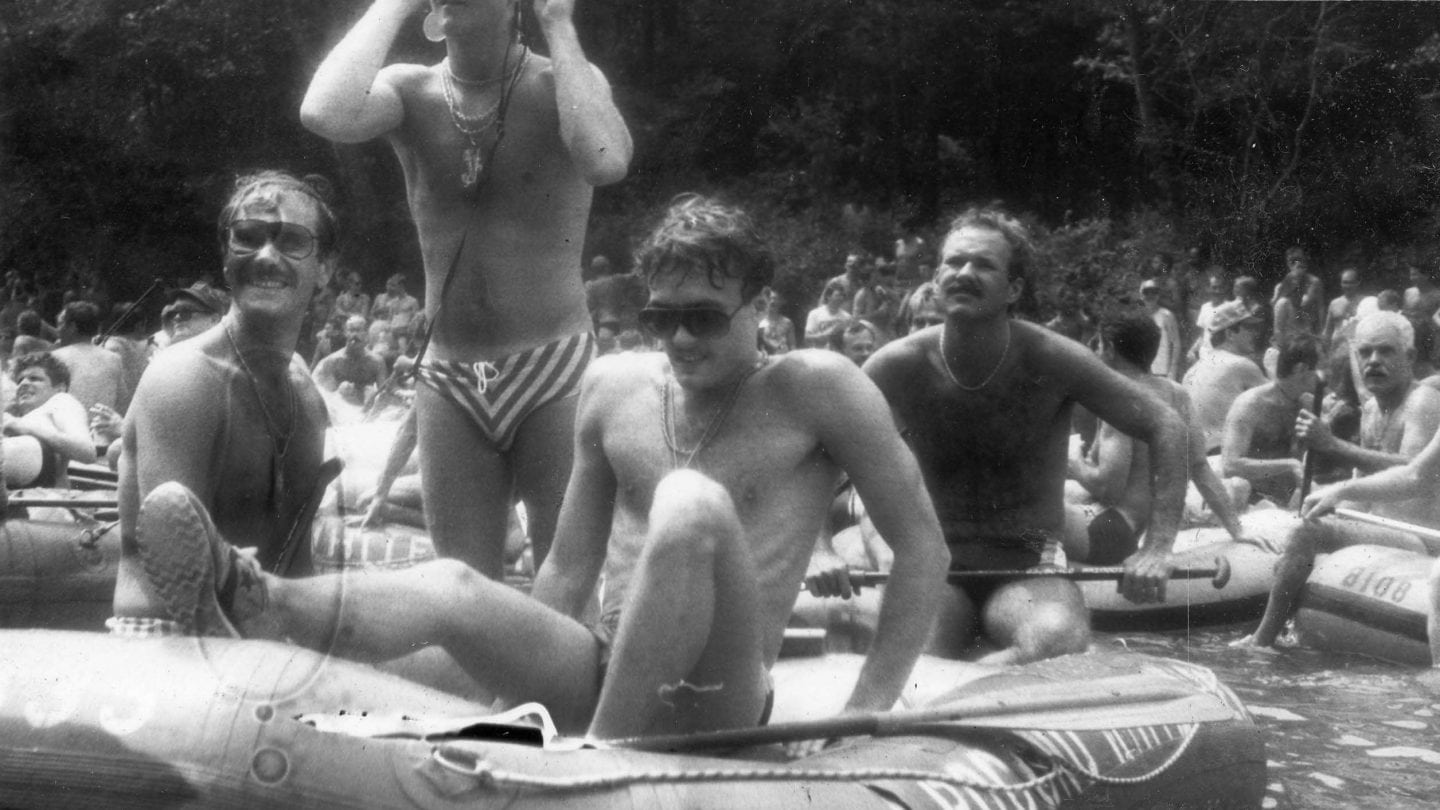
Hotlanta River Expo, c. 1981
In 1979, pride went aquatic with the Hotlanta River Expo. Though not a part of the official Atlanta Pride Parade, Hotlanta River Expo’s inaugural year attracted more than 300 gay men rafting down the Chattahoochee River. By 1989, the event had grown into one of the largest gay events in the Southeast. It became so popular that it had to be extended over four days and include multiple parties, competitions, and the annual Mr. and Miss Hotlanta Pageants.
Back on land, Atlanta Pride officially became Atlanta Lesbian, Gay, and Transperson Pride in 1980. The following year, Lesbian, Gay, and Transperson Pride Week was celebrated locally by an estimated 3,500 participants. Programming expanded beyond the traditional parade and rally to include a live concert, radio show, art show, film festival, history symposium, block party (on 7th Street between Piedmont Avenue and Juniper Street), voter registration drive, and an open house for the city’s Atlanta Gay Center and Atlanta Lesbian Feminist Alliance headquarters.
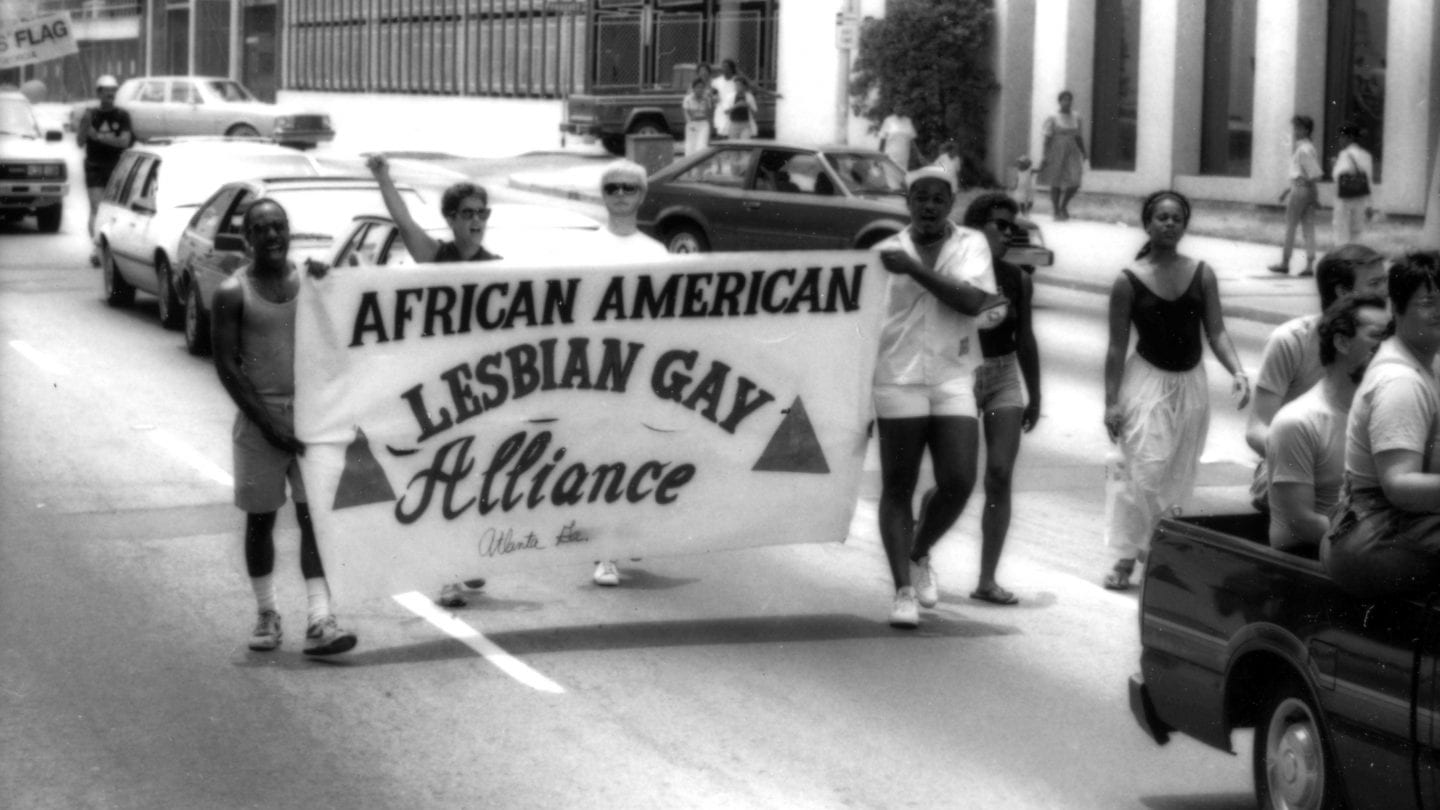
African American Lesbian Gay Alliance, 1988
Visibility and Health: Pride in the 1990s
By the late 1980s with the rise of the AIDS epidemic, pride’s mission began to pivot toward public health. The theme for Atlanta’s 20th annual pride in 1990 was Be There, Be Aware, Be Counted. Over 10,000 people marched for 15 blocks to join another 20,000 at a rally in Piedmont Park. Around 500 people attended a mass candlelight vigil for Atlantans who had died of AIDS.
It was a landmark year for Atlanta Pride in terms of attendance and press coverage. Both the Atlanta Journal Constitution and Creative Loafing featured cover stories on the week’s events, including a mass commitment ceremony joining 83 couples. The celebration’s first craft market and the Gay Pride Run/Walk were included in 1990.
By 1994, an estimated 150,000 attended Atlanta Pride, making it the fifth largest in the nation.
Although a gathering of African American lesbians and gay men in Piedmont Park had been a tradition for more than a decade, 1997 marked the first official Atlanta Black Gay Pride event. Today, Atlanta Black Pride is an entire week of performance, demonstration art, college fraternity reunions, as well as a film festival, literary café, and health and lifestyle expo.
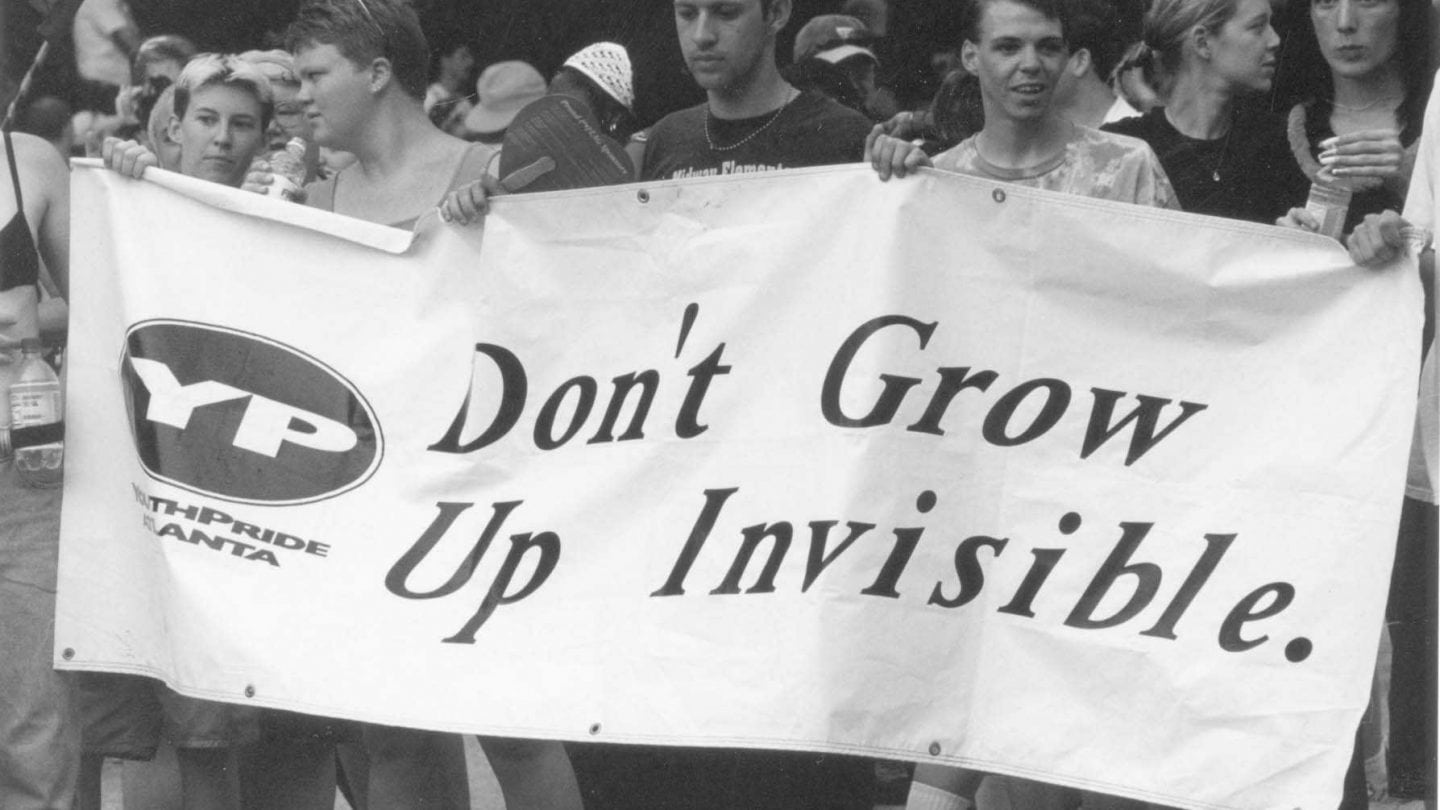
YouthPride, 2000
Celebrating in the New Millennium: Pride in the 2000s
The 2000s ushered in a new generation of Atlanta Pride participants. The celebrity of headlining acts at the annual concert in Piedmont Park increased over time. Athens locals, The B-52s, played at the 30th annual Atlanta Pride celebration in 2000. The Indigo Girls headlined in 2005 and played to a crowd of over 320,000.
Corporate involvement also grew. In 2000, Coors, Pepsi, Jose Cuervo, Stolichnaya, and Showtime donated an aggregate $250,000 to cover festival costs. Today, Atlanta Pride’s sponsors range from hometown companies Coca-Cola and Delta Air Lines, to international brands, such as Smirnoff.
In 2009, the organizing committee elected to reschedule pride from its traditional date in June to October. The decision was made to keep crowds out of the heat and have the celebrations coincide with National Coming Out Day on October 11.
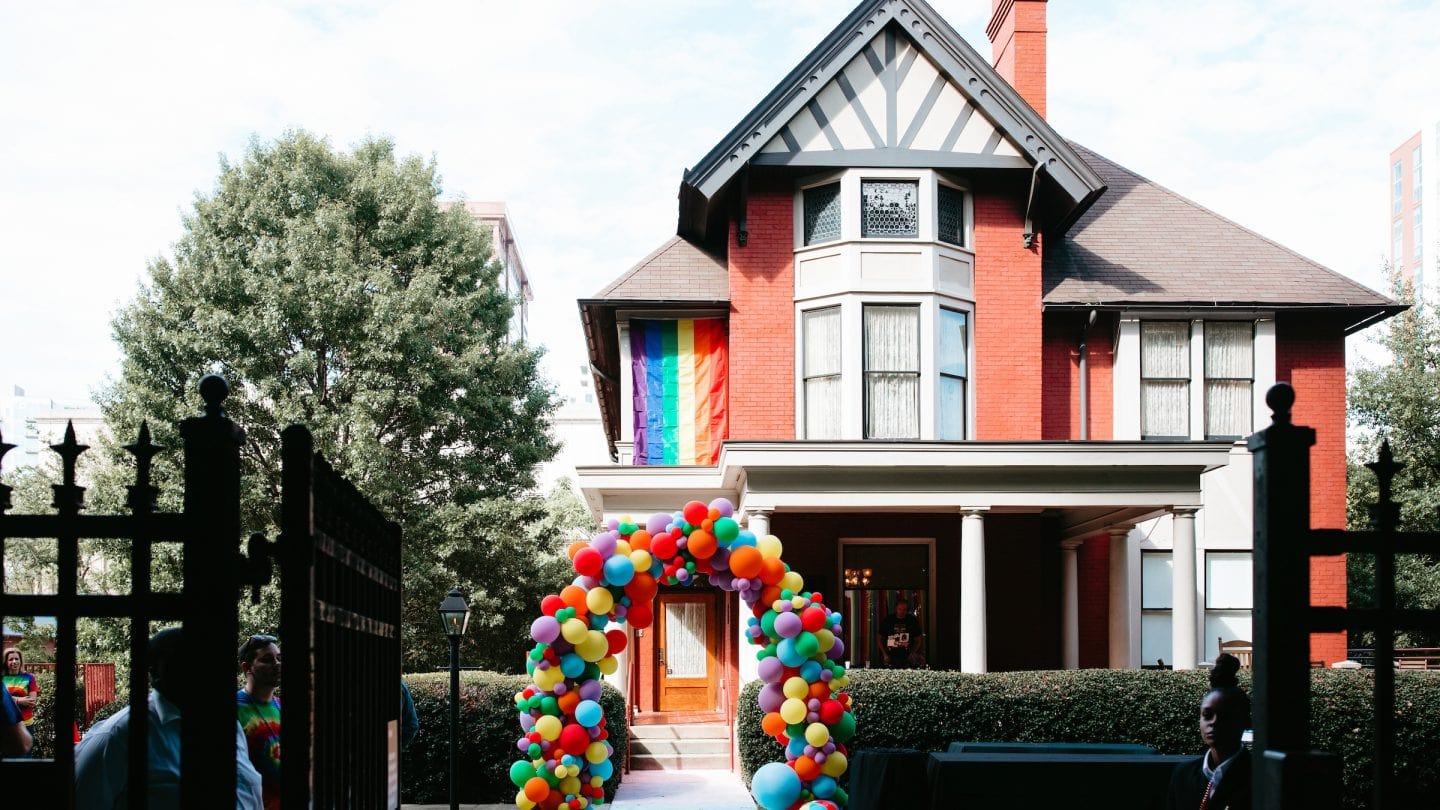
Atlanta History Center’s Margaret Mitchell House in Midtown decked out for the annual Pride Parade Watch Party
Further Reading and Research
Curious to know more? We’ve got you covered. Atlanta History Center is proud to host the Atlanta Lesbian and Gay History Thing, the cornerstone of our LGBTQIA+ collection. The ALGHT is a collection of papers and publications related to the lesbian, gay, bisexual, and transgender community of Atlanta. The collection includes the personal papers of Atlanta activists as well as local gay newspapers and magazines, public health pamphlets, travel guides, and community publications . The collection is housed in Atlanta History Center’s Kenan Research Center, at our Buckhead location. We invite you to explore the collection and learn more firsthand history for yourself.
All are welcome.
Additional resources.
- Out in Atlanta: Atlanta’s Gay and Lesbian Communities Since Stonewall: A Chronology, 1969-2012 | Wesley Chenault
- Gay and Lesbian Atlanta | Wesley Chenault and Stacy Braukman
- Terry Bird Collection of Atlanta Lesbian and Gay History Thing, Inc. Records | Georgia State University
- Richard Rhodes Papers | Georgia State University
- GLBTQ encyclopedia entry for Atlanta | Tina Gianoulis
- From Whence We Came: Our LGBTQ ATL History | Berlin Sylvester
- Portrait of a community: An LGBT Atlanta timeline | GA Voice
- Celebrating 44 years of Atlanta Pride and who we are | GA Voice
- Pride: Atlanta festival celebrates its 37th year | Atlanta Journal Constitution
- Annual Atlanta Pride Festival: The Early Years | Atlanta Journal Constitution
This year, more than 325,000 are expected to attend the 49th annual Atlanta Pride. Though it’s taken new forms over the years, pride’s mission has remained the same: to advance unity and visibility amongst Atlanta’s LGBTQIA+ community.
Atlanta History Center Midtown invites you to come party on our front lawn right at 10th and Peachtree Streets. Being an engaged citizen takes on many different forms. Celebrating your community through participation in landmark events and supporting your neighbors is a wonderful form of civic engagement. So, join us October 13 to celebrate this Atlanta tradition together! Come be a part of Atlanta Pride’s next chapter with us.
Most importantly—Be proud. Be historic. Be you.

